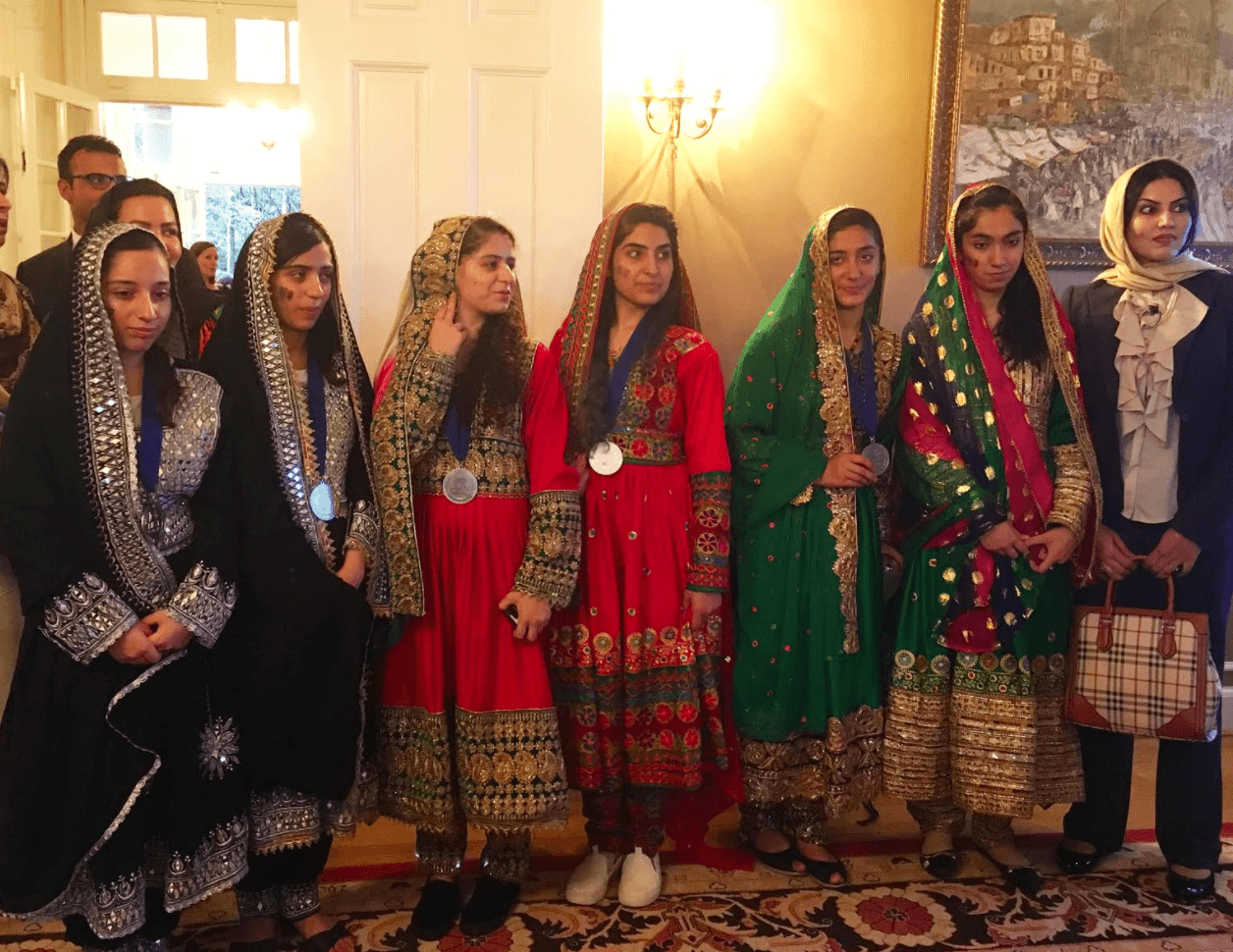16 years ago, a girls’ robotics team from Afghanistan could not even exist. During the brutal rule of the Taliban, Afghan girls were not allowed formal education. At all.
Yesterday, a team of Afghan girls who participated in an international robotics competition were feted at a reception at their country’s embassy in Washington, DC.
How did six young girls from Afghanistan gain such notoriety in the past weeks? First, it was because their visas to participate in this competition were denied, sparking outrage and a last minute intervention from the White House. This enabled their travel to the US, where they participated in the robotics competition.
But deeper still, this event and the celebrations around it demonstrate the progress that Afghanistan has made toward making quality education accessible to girls.
Fatemah Qaderyan is the the youngest member of the team at 14. At the reception last night, she described her passion for robotics. Fatemah says she became interested in robotics when she was a small child watching cartoons in her family’s home. Later in school, when she heard about the robotics competition, she knew she had to sign up immediately. Fatemah won the competition over 150 other students and became the sixth member of the team representing Afghanistan. She says, “With a lot of passion, I try to climb the ladder of success.”
Fatemah’s passion and the courage of all the girls on the robotics team shine brightly and show the progress Afghanistan has made towards educating girls and, though there is still work to be done, there are role models now to lead the way.
Afghanistan has made progress on girls education, but there is still a ways to go.

In 2002, Afghanistan enrolled 900,000 boys in school but there are no facts and figures on women’s engagement in education because they were barred from any kind of formal learning. Over the years, the Afghanistan Ministry of Education has built over 16,000 schools and trained 154,000 teachers. Now there are over 9 million students enrolled across the countries with 40% being women and girls.
The goal established in Sustainable Development Goal 4 aims for equitable and quality education for boys and girls around the world by 2030, and though Afghanistan is still not there with only 40% of girls in school, the immense progress for women’s education in Afghanistan is undeniable.
When the girls walked into the reception, they were greeted by a throng of people taking their picture, wanting to be among the few that were able to honor them in person. The girls, were camera ready and prepared to show off their award for courageous achievement granted to them earlier today.
“This is a very proud moment for us,” said Afghan ambassador Hamdullah Mohib. He continued with a speech on the progress of Afghanistan with the girls’ robotics team as the representation of that progress. “In health, education, and global connectivity, these girls here represent all of our achievements put together.”
Two members of Congress, Susan Davis and Suzanne Bonamici, presented the girls with awards. The reception ended with a video message from Afghanistan’s First Lady Rula Ghani who thanked the girls for their courage to represent Afghanistan and show the world what an educated Afghan society looks like.
Educating women is often a perilous journey. Women around the world risk their lives to learn how to read and write — let alone build robots. But that’s exactly what a six-member team from Afghanistan did and they are now becoming the face of progress for girls’ education and women in STEM worldwide.
